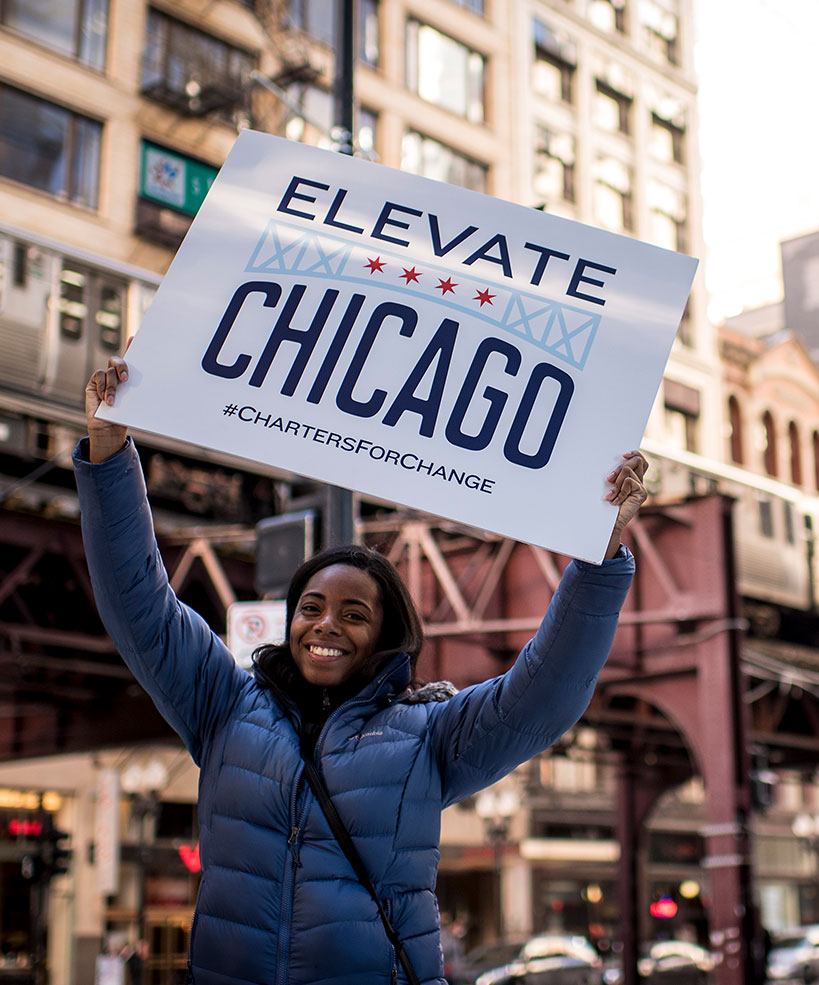
Top Education Stories You Don’t Want to Miss: March 27th – April 2nd, 2021
By Rachel Hinton for The Chicago Sun-Times
“Gov. J.B. Pritzker on Wednesday announced an influx of $7 billion in federal funds over three years for kindergarten through secondary education, as well as four initiatives focused on supporting students, as the state works to “overcome the pandemic’s effects on our students, on our parents and on our educators.” “This is to make sure that we’re bringing kids back to the kind of level of learning that they had before the pandemic, and to try to focus on those kids getting on the same path that they had been on prior to COVID-19,” Pritzker said at a news conference at South Elgin High School. The federal funds, which will be sent directly to school districts around the state, come from the American Rescue Plan Act, which Congress passed earlier this month. Those dollars are in addition to the funds the state already provides to schools and local school districts provide, Pritzker said. The governor also announced four new initiatives at the state level to “provide guidance and support in some of the most critically important aspects” of supporting students as they begin to transition back to the classroom.”
Lightfoot: No further reopening until virus ‘numbers stabilize’
By A.D. Quig for Crain’s Chicago Business
“With daily cases in the city hitting nearly 500 a day, Chicago Mayor Lori Lightfoot warned that the city will not further reopen the economy until COVID-19 “numbers stabilize and start to come down.” After a significant drop and plateau of COVID cases in late winter, infections and hospitalizations are again on the rise. That climb has halted the state’s move to its “bridge phase,” which would allow indoor activities like dining and exercise to operate at 60 percent capacity, and allow outdoor events to welcome more patrons. Chicago’s positivity rate is 4.5 percent, up from 3.3 percent only a week ago. The seven-day rolling case average is 498, up 37 percent from a week earlier. That number is above the city’s 400 daily case target and considered “high risk” based on the city’s reopening metrics, as is the percent positivity rate. Cases are fastest growing in North Side neighborhoods and among those 18-39.”
How many Chicago teachers have been vaccinated? No one knows — leaving serious blind spots for CPS
By Nader Issa for The Chicago Sun-Times
“In three weeks, up to 121,000 Chicago Public Schools students could be learning in classrooms at the start of the fourth academic quarter, doubling the number of students who returned this month. More kids — including potentially tens of thousands of high schoolers for the first time — means a need for more adults. And bringing back more educators would require more vaccinations, per a district agreement with the Chicago Teachers Union. As CPS races to get shots in arms by the mid-April expansion of in-person learning, how exactly is that progress coming along? Nobody really knows. Records published on CPS’ website show 16,200 workers — about 34% of the district — have received their first dose of a COVID-19 vaccine, and the district says all staff has been offered appointments to get shots. But fewer than half of CPS employees have disclosed their vaccination status to the district, meaning thousands more have likely gotten a shot but not yet told CPS.”
Low-Income School Districts Saw Greatest Dip In Attendance During The Pandemic
By Susie An for WBEZ
“The pandemic changed everything for kids across the country. In suburban North Chicago, those effects were immediate and traumatic. “They knew people who had died, multiple family members who’d been hospitalized,” said John Price, superintendent of North Chicago School District 187. The K-12 school district is about 82% low income. Price said the administration had to work hard to set every student up with computers, internet and headphones. But that didn’t solve the deeper problems. “Families and students that are living in poverty are already struggling with a lot of extra pressure and challenges,” he said. Price said engagement has improved since the early days of the pandemic, and the district is now offering hybrid learning. But he said in the first quarter this year, some schools saw attendance drop more than 10 percentage points. District-wide, attendance dropped about 4 points compared to before the pandemic.”
Chicago parents could have more time to file special education complaints
By Samantha Smylie for Chalkbeat Chicago
“Special education advocates are pressing the state to extend a deadline for Chicago families to seek relief for those years the district delayed or denied services to children with disabilities. A bill in the state legislature, which would extend the timeline, passed a committee last week and will head to the House floor for debate. The advocates say that the school district has reached out to only a fraction of families that it promised to contact, so they also are renewing a call to extend the length of time Chicago would remain under a state monitor for its years of failed service. The pandemic, they warn, has made the situation worse for children with disabilities. Special education advocates attended the House’s school curriculum and policies committee last week to testify in favor of HB 2425. This bill will extend the timeline for when Chicago families can file a complaint with the state board of education from Sept. 30 of this year to Sept. 30, 2022. The bill has received a lot of support, with 345 witness slips in favor of it.”
